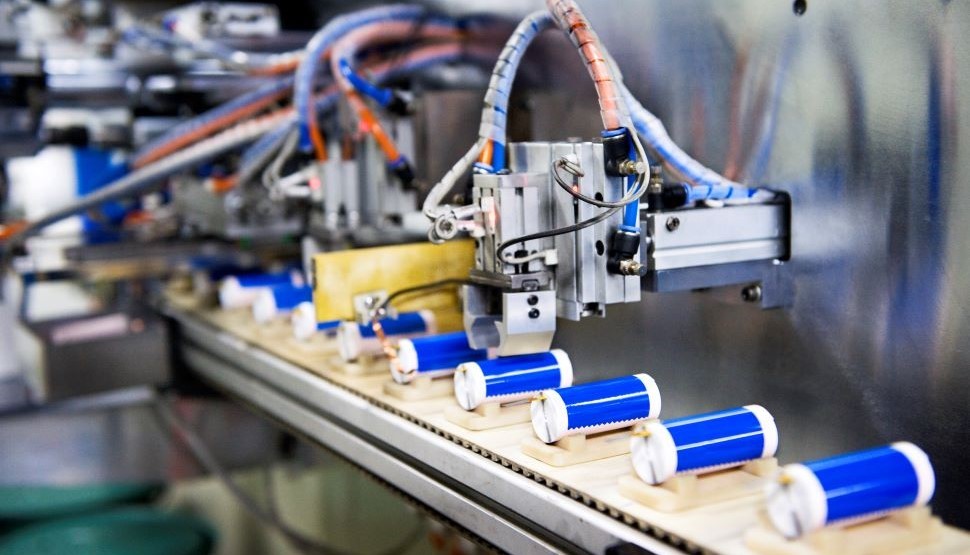Lithium-ion battery hazards: FM releases first-ever comprehensive guidance
Lithium-ion batteries are everywhere. Now there’s guidance on storing and manufacturing them.

There is a pretty good chance you are reading this with the help of a lithium-ion battery. They power your cell phone, your laptop and your tablet. Even if you’re still the desktop computer type, you are nevertheless surrounded: Smartwatches. Digital cameras. Robot vacuums. From devices as small as an electric toothbrush to as big as an electric car, lithium-ion batteries are everywhere.
And in recent years, they have also been in the news – when they catch fire, explode, or both. These events remain rare, especially given how ubiquitous these batteries are. But lithium-ion battery fires are nonetheless an emerging resilience challenge for global businesses.
Commercial property insurer FM is working to help address that challenge. In October, FM released a first-of-its-kind loss prevention guide – or data sheet – to manufacturing and storing lithium-ion batteries. For years, even as the drive to greener energy solutions sparked a surge in lithium-ion battery adoption, the industry lacked comprehensive fire protection standards.
Now it has them.
“There’s been this perception, because of what you’ve seen in the news, that they’re very hazardous, that they’re always catching fire and blowing up,” said Stephanie Thomas, senior staff engineering specialist at FM, who led the development of the data sheet. “What you don’t consider is that you carry them around with you all the time. … There’s a big misconception of the frequency of the hazards and limited information available on how best to deal with them.”
This newly released data sheet uses rigorous engineering and research to correct that. It is based on years of testing at FM’s research facilities in West Glocester, Rhode Island, and Norwood, Massachusetts, along with input from manufacturers, users and other experts. FM researchers set pallet-loads of lithium-ion batteries on fire to replicate real-world conditions. That was complemented by smaller-scale testing to understand the physics at a more basic level.
All of that work went in to help FM see things others don’t.
“It’s not that you can’t protect,” said Benjamin Ditch, principal research engineer at FM, who led research efforts to support the development of the data sheet. “We just have to make sure we are understanding the hazard.”
Here, for example, is one of the tests that helped FM do just that.
FM’s data sheets are free of charge, incorporating nearly 200 years of property loss experience, research and engineering results on everything from baled fibre storage to data centres. The full data sheet – FM Loss Prevention Data Sheet 7-112, Lithium-ion Battery Manufacturing and Storage – can be found on FM’s online database. For a higher-level overview on lithium-ion, read on for some key highlights:
Lithium-ion batteries and thermal runaway
If you know even just a little bit about lithium-ion batteries, that little bit might be about thermal runaway.
Thermal runaway is essentially when a battery cell has a short circuit. That creates a chemical reaction leading to a release of gases, which can lead to a fire or an explosion. Once it starts, you can’t stop it. What you can do instead is try to prevent it from leaping to other cells – by removing affected batteries or by cooling them with water.
And why do batteries go into thermal runaway in the first place?
Generally, the ones that do end up having problems were “abused” – dropped, overcharged, punctured, even bitten. (Yes, this is a thing that dogs and people have done.) In some cases, manufacturing defects cause abuse. Other times, a fire in one battery can cause abuse, and thermal runaway, in another.
“Everybody’s cell phone, everybody’s laptop – the majority of them never have a problem,” Thomas said. “The ones we hear about have likely been abused in some way.”
Lithium-ion battery storage and sprinklers
Just as products powered by lithium-ion batteries come in all shapes and sizes, so too do the ways of manufacturing and storing them.
You could have a load of power tools in your warehouse. Each of those power tools is outfitted with a lithium-ion battery, charged to 30% power. The batteries are inside the power tool’s plastic casing, which is inside the product’s packaging, which is inside a shipping box.
Taken together, that is a relatively low risk. The lower charge means the battery is less likely to go into thermal runaway. Even if a fire did occur, the packaging fire could activate a sprinkler, which would quickly get the blaze under control and not involve adjacent batteries.
On the other hand, storing a load of cells, modules or batteries themselves brings a different set of challenges. When storing batteries, the data sheet recommends protection options based on the state of charge, ceiling height, storage height, and of course packaging materials. When batteries aren’t in cartons, you’d expect more to get involved in a fire event. Because of that, more robust protection is needed to limit the overall battery involvement. That could mean a lower storage height, for example, or in-rack sprinklers.
Whatever the exact configuration, the recommendations are underpinned by rigorous testing. Clients can point to that respected and formally documented approach when implementing protection measures.
“You get a lot of credibility because of how the data sheets are developed,” Ditch said.
More collaboration on lithium-ion battery safety
The data sheet was the result of collaboration: It was developed by Thomas and her team, with research support from a team led by Ditch, along with input from companies that make lithium-ion batteries, companies that work with lithium-ion batteries in other products, even sprinkler manufacturers.
But it’s not the end of the story. The data sheet is already undergoing revisions as more research and engineering goes into this fast-evolving technology. As the risks grow and change, FM’s experts will be there along the way.
